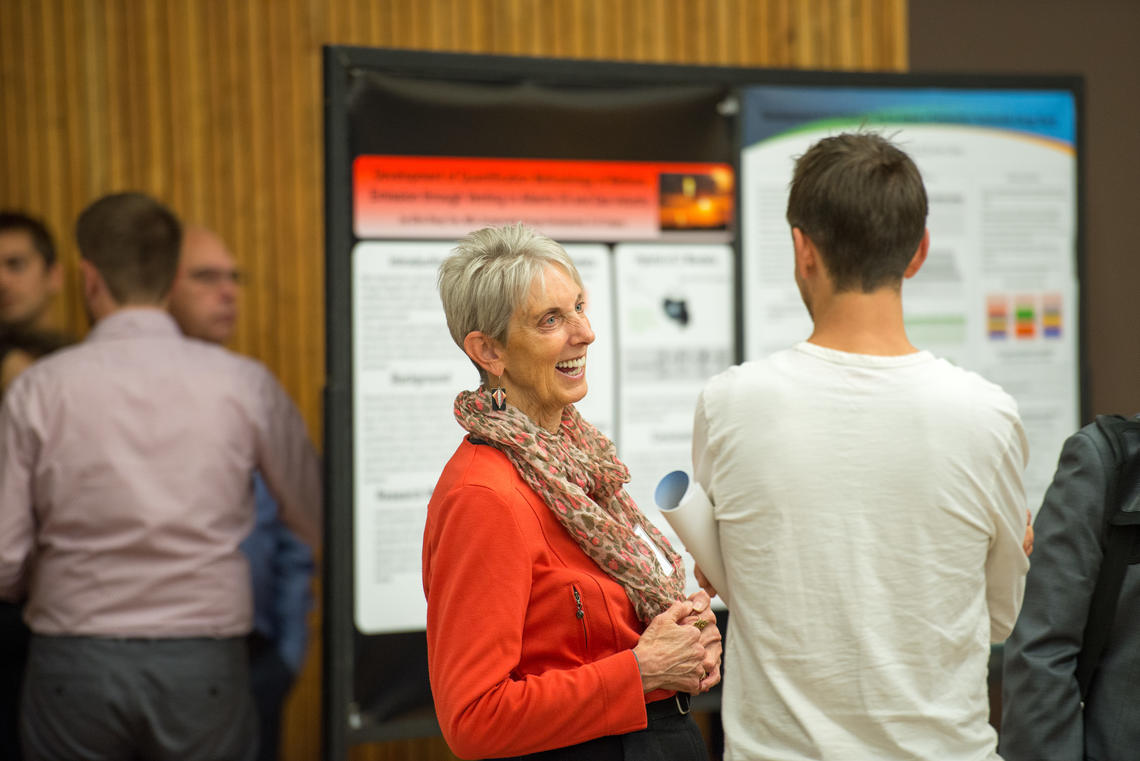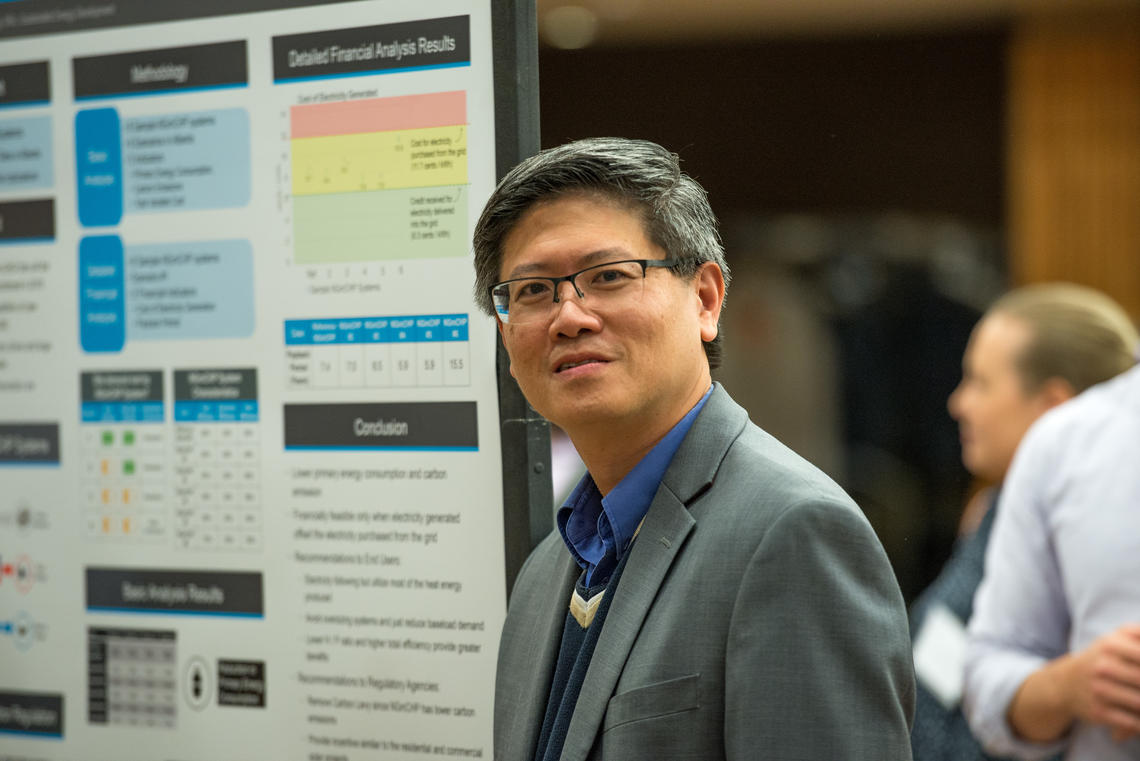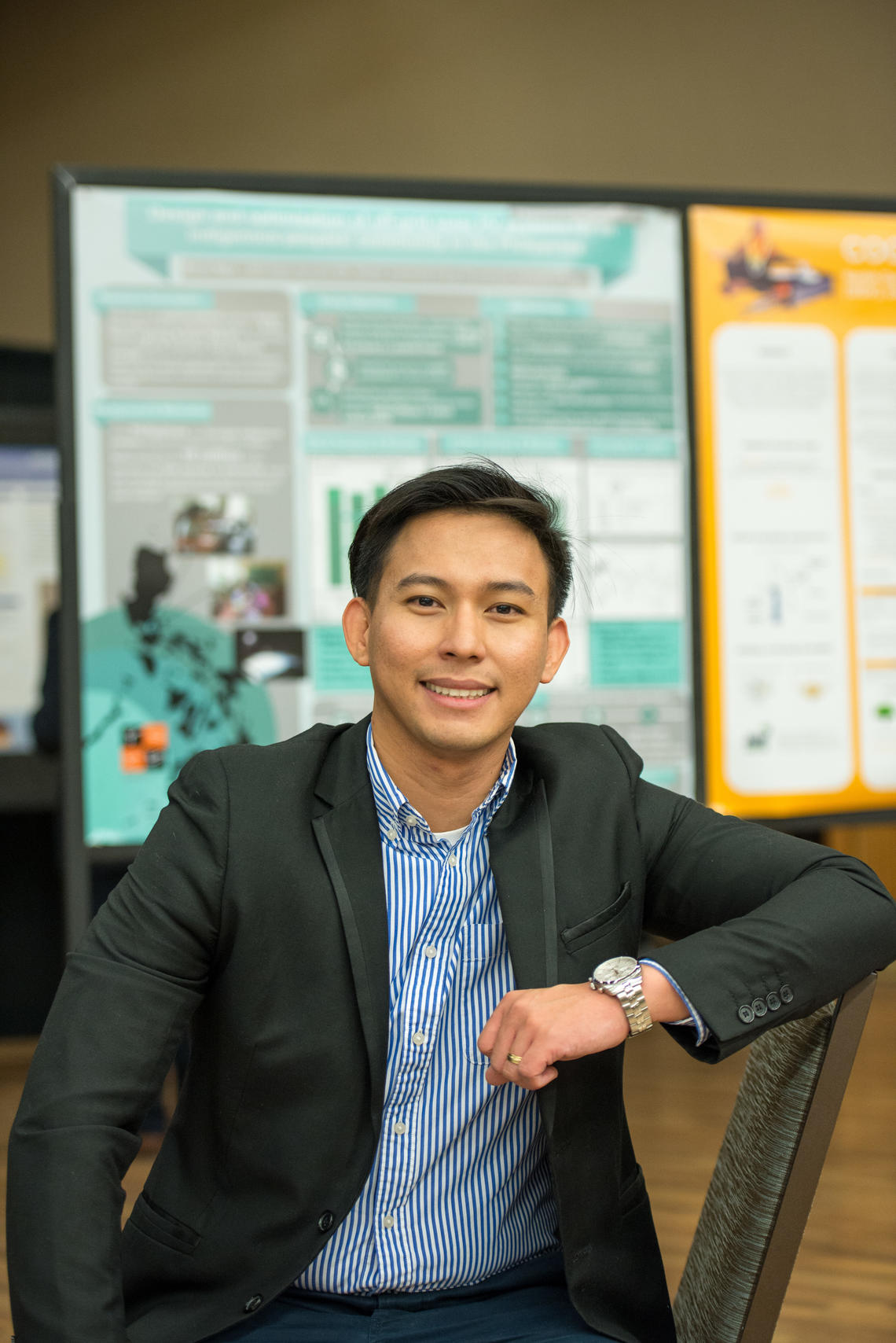Nov. 16, 2018
Class of 2018: Students offer solutions to use fewer hydrocarbons and more renewables

- Above: Irene Herremans teaches the capstone research course and supervises students in the Master of Sustainable Energy Development program. Here, she engages with attendees at the 2018 Sustainable Energy Development Student Research Showcase.
Thirty-six students are graduating from the Master of Sustainable Energy Development (SEDV) on Nov. 16. Many started their journey from different places. More than half came to this interdisciplinary degree with a background in engineering, with the remaining evenly spread out between business, environmental science, science and other disciplines including political science and law.
Some came back to university to make a transition to a new career, while others went back to the same career with a different view. All of them came to this graduate degree because they were interested in how to meet the world’s increasing energy needs with fewer demands on the environment.
The approach: multidisciplinary, bringing together engineering, business, environmental design and law. The philosophy: no single field holds the solution to sustainable energy. By working together, better systems can be designed and implemented to meet energy demands now and into the future.
The final requirement for the SEDV degree is a capstone project that is anchored in energy and the environment and one other dimension which may be social, cost-benefit, technology regulations, life-cycle analysis — the possibilities are really limitless.
The final projects that were presented were as varied as the students’ backgrounds and included alternatives for bitumen use, a wind energy case study and a feasibility study for a rural water system alternative. Many of the projects focused on fossil fuels — how to make existing systems more sustainable and for other areas to skip over fossil fuels and go directly to renewables for their energy needs.

Irene Herremans at the 2018 Sustainable Energy Development Student Research Showcase.
Don Molyneaux, for the University of Calgary
Making fossil fuel solutions more sustainable by using less energy
When many of us think about reducing energy demands, we think about decreasing consumption by the end user. Turn off the switch. Use the device for a shorter period of time. What Kelvin Tan explored in his capstone project was being more efficient in the generation of the energy. Specifically, he investigated the feasibility of using natural gas micro combined heat and power for residential and commercial sites in Alberta.
All of us have probably been somewhere that uses combined heat and power technology. Places like hospitals and universities often choose this kind of power generation to meet their needs because these systems are 80 to 90 per cent efficient for generating both heat and power. By comparison, traditional electricity generation is only 40 per cent efficient, with heat just being lost as waste.
Alberta has adopted a plan to have 30 per cent of our energy generated by renewable by 2030, but that remaining 70 per cent will still come from fossil fuels and Tan would like to see that usage to be as efficient as possible.
“Solar is intermittent and battery power is a problem, with many environmental impacts from manufacturing and disposing of batteries,” says Tan. “This system can be used together with solar.” The combined system can help meet increasing electricity demands that are expected in Alberta, particularly with the adoption of electric cars in coming years.
Through his research, Tan does not see the immediate application to the residential market as there are no systems small enough yet. He sees the next potential target markets for capitalizing on this system are farms, recreation centres, multi-unit buildings, small commercial and malls.

Kelvin Tan, a fall 2018 graduate of the Master of Sustainable Energy Development program.
Don Molyneaux, for the University of Calgary
Bringing renewable energy to remote regions
Not only did Marvin Mayo research the design, economics and environmental impacts of a solar home lighting system for a remote community in the Philippines, he is also working with Trigo Para sa Tribu Foundation, an NGO in the region, to implement this solution.
“Solar is the most egalitarian form of energy,” offers Mayo. “It can be scaled down in a way that the ordinary individual can use it.”
The Dumagat Tribe, a group of Indigenous Peoples living in the Sierra Madre Mountains, will receive the system as a grant. This group of 250 people currently has no electricity and still relies on candles or kerosene to light the night. In return for the grant, the community is making a social contract to let all the children go to school and use the money previously spent on lighting to increase the purchases of nutritious food.
Mayo, who moved to Calgary from the Philippines to take the SEDV program, spent a lot of time with the community to determine their needs, their fears and to see if they saw the electric system supporting their community.
Immediately after completing his final courses for SEDV, Mayo got to work on a new project, launching a not-for-profit organization in Canada: Light the Darkness Alliance to help raise the $10,000 required for the implementation of the project they hope to start in February 2019.
“It will be a SEDV legacy,” says Mayo, talking about implementing his research. “A direct, life-changing impact on the lives of many and we are all a part of it.”

Marvin Mayo is implementing his capstone project from his Master of Sustainable Energy Development.
Don Molyneaux, for the University of Calgary
